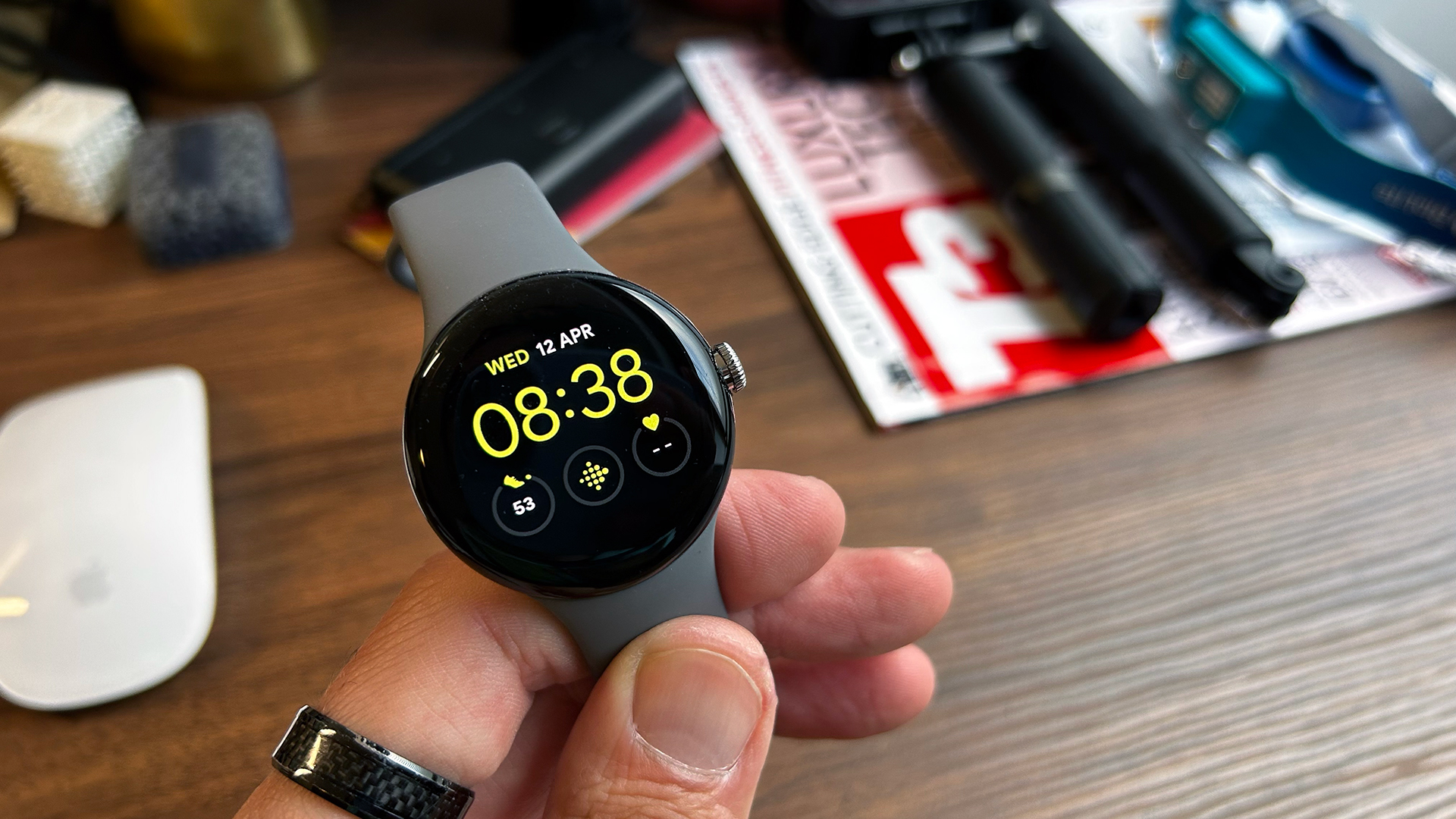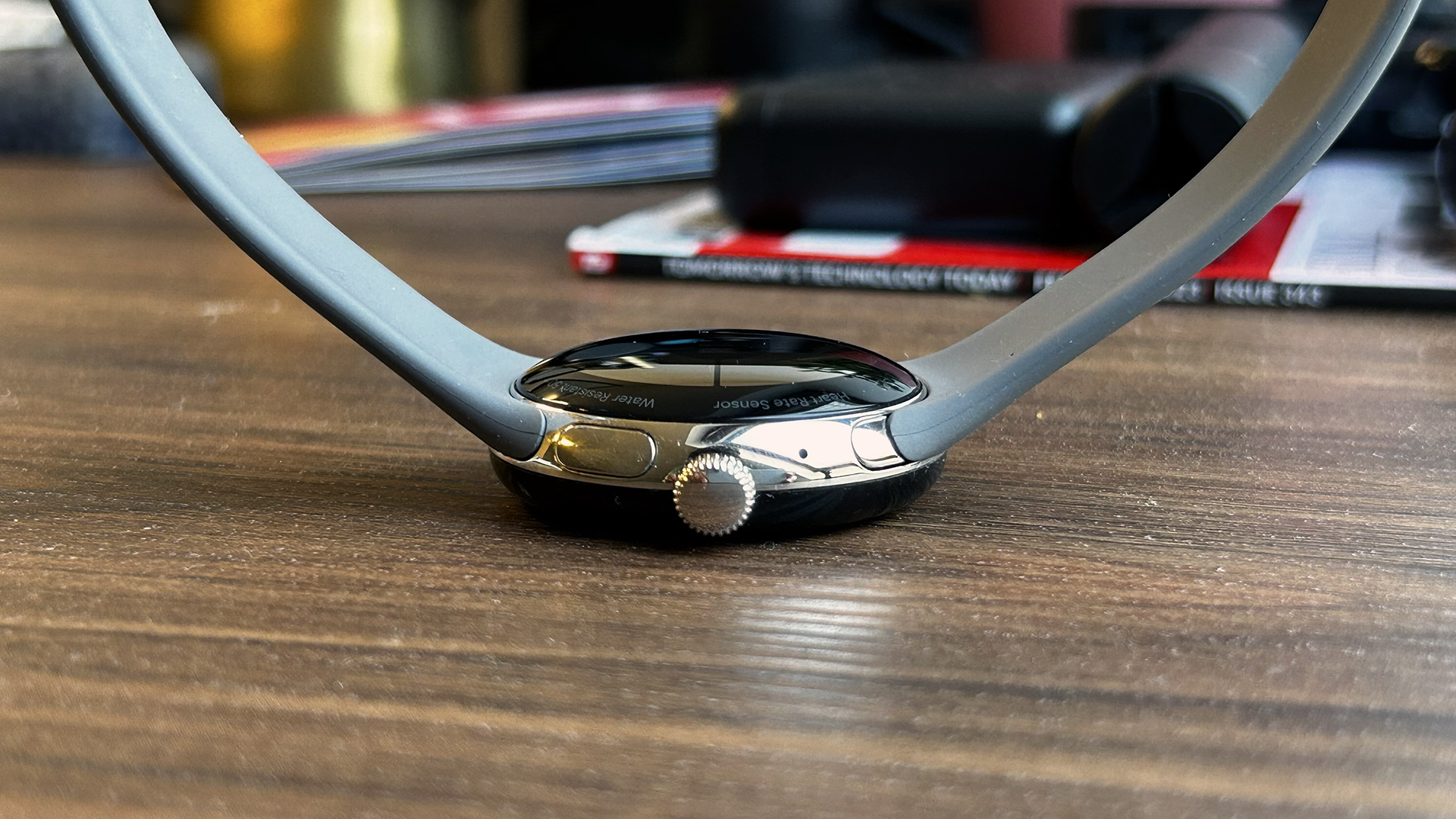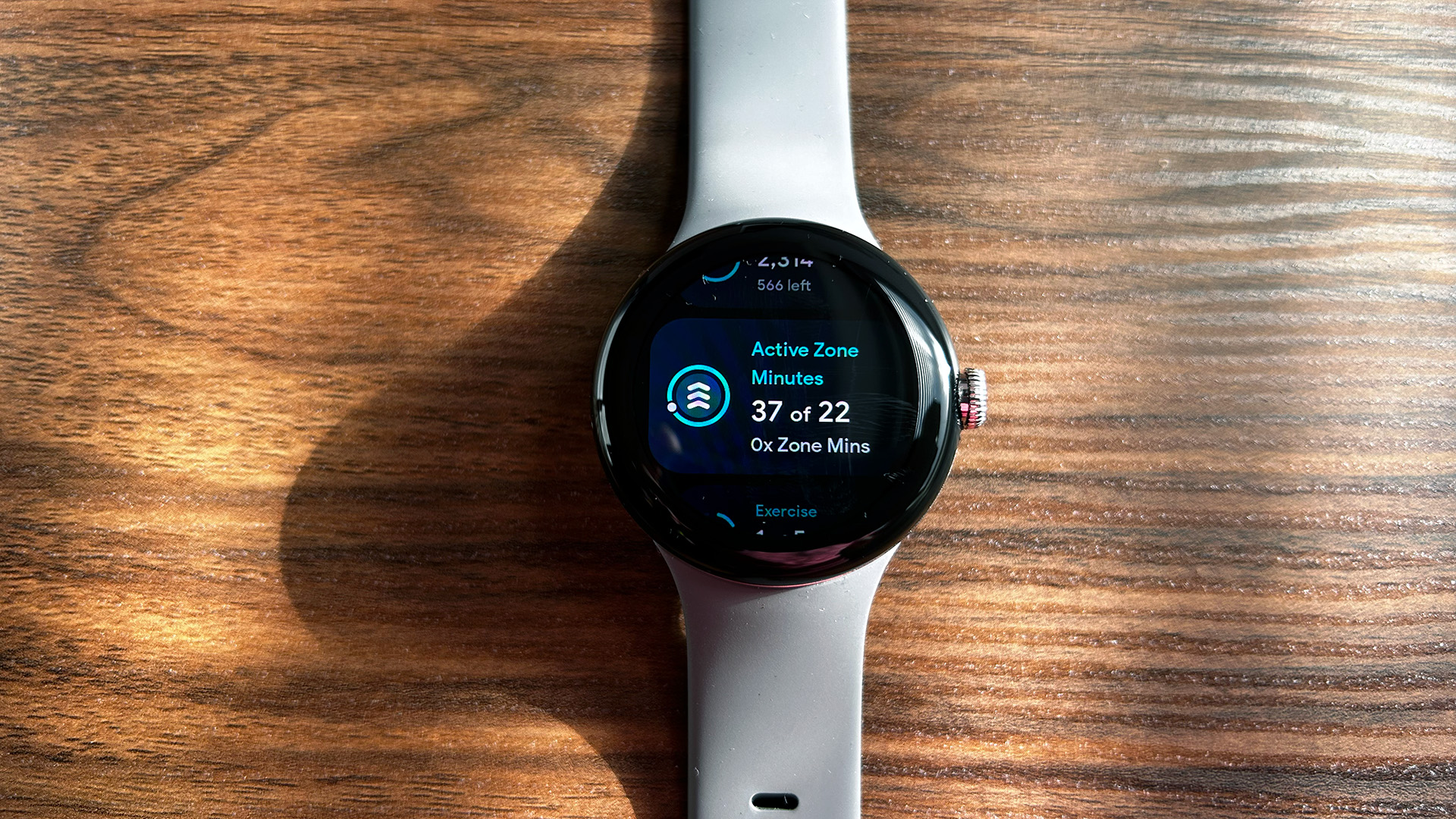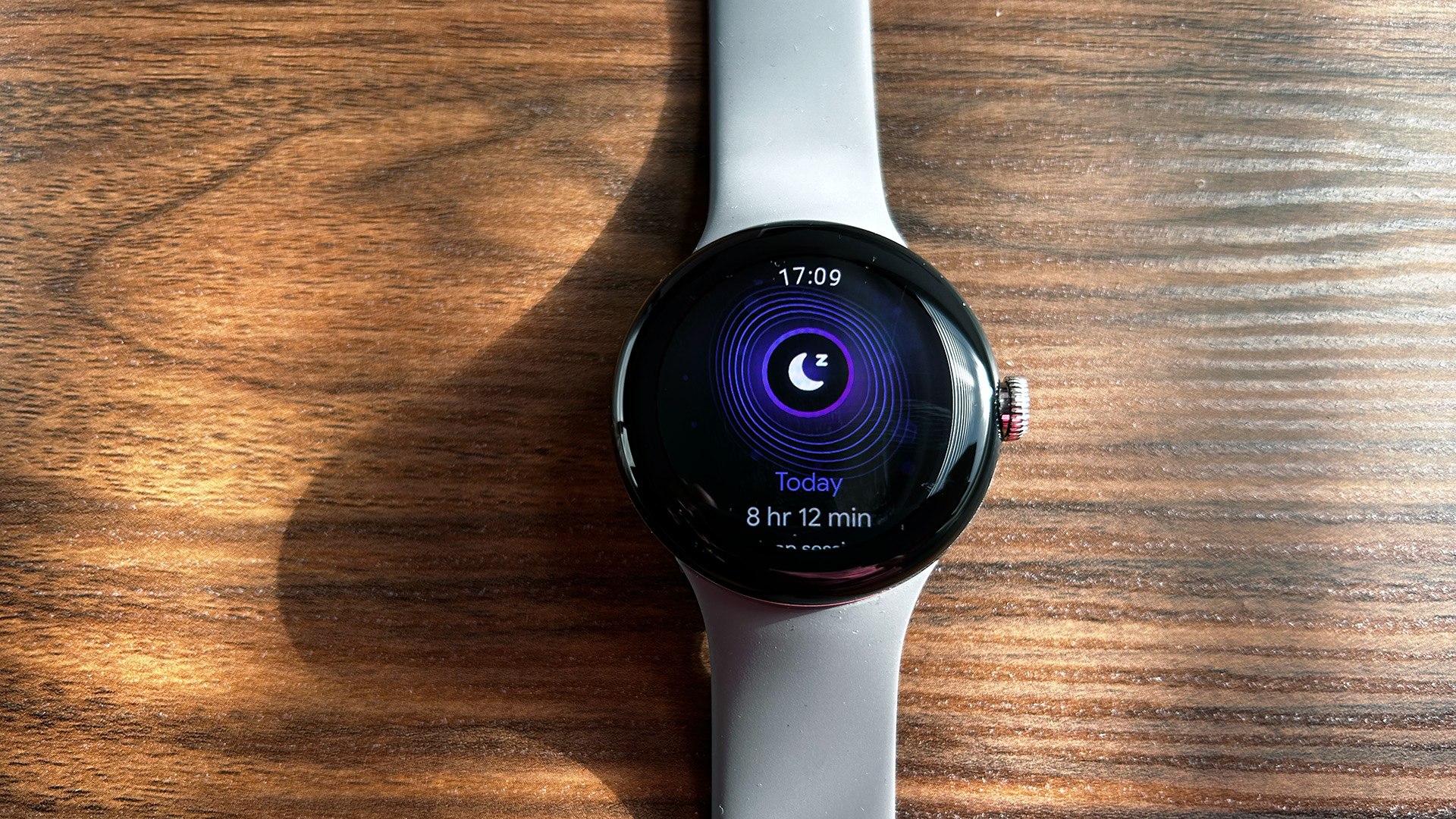Google Pixel Watch review: Shoot for the stars
Google is after the biggest player in the smartwatch market, and the brand's first premium wearable shows promise


The first lovechild of Google and Fitbit, the Pixel Watch, is a sexy and feature-rich wearable that falls short only in a few categories. Battery life would be longer, and the lack of fast charging is befuddling. However, it's a superb Apple Watch alternative for Android smartphone users, particularly Pixel owners.
-
+
Finally, a viable Apple Watch alternative for Android users
-
+
Makes WearOS usable
-
+
Heap-loads of health and fitness tracking features
-
+
6-month Fitbit Premium subscription included in the price
-
+
Premium materials and unique design
-
-
Only works with Android smartphones
-
-
Band is fiddly to swap
-
-
Not as good for fitness tracking as the latest Apple Watch
Why you can trust T3

Google Pixel Watch review TL;DR: The tech giant's new wearable is already the second most sought-after smartwatch, but it's not quite as polished as Apple's market-leading Watch Series (yet). It's an excellent Apple Watch alternative for Android – especially Pixel smartphone – users.
Google has a long history of abandoning projects they spent tons of money on (just search 'killed by google' online). They don't mind dedicating resources to develop products and services that may or may not work out; after all, some of these are on top of their respective fields (e.g. Google Maps). Other times, Google (or, more like, its parent company, Alphabet) will assimilate other brands and use their R&D to develop their own products.
The Google Pixel Watch is the result of the latter process. Google acquired wearable-expert Fitbit in January 2021 to help them develop their own wearable that can finally take on the best Apple Watches to become the best smartwatch overall. Google needed Fitbit's enormous health database and hardware know-how to craft the brand's long-teased watch.
There was clearly a lot of pressure on Google to nail the hardware of the Pixel Watch, and after testing it for a couple of weeks, I must say I'm not disappointed with the watch. It feels premium on the wrist and uses all the best Fitbit features I grew to like in recent years. Is it good enough to take on the Apple Watch Series 8, though? Well, not quite, but for Android users, this might be the next best thing. Read my full Google Pixel Watch review below to find out more.
[UPDATE OCT 2023: Google launched the successor of the watch, the Pixel Watch 2, which I reviewed here: Google Pixel Watch 2 review. It's thinner, lighter, and can track and help manage stress, thanks to the new cEDA sensor, inherited from the Fitbit Sense 2.]
30 August 2024 – Google's Weather app for Wear OS smartwatches now includes a new feature that displays the next four hours of weather forecasts directly on the main screen, enhancing user convenience with immediate, detailed weather information without extra steps. Read more here.
Google Pixel Watch review
Google Pixel Watch review: price and availbility
The Google Pixel Watch was announced in October 2022 and is available to buy now directly from Google UK, Google US and Google AU with prices from £339/$350/AU$549 (Bluetooth/WiFi only version). The watch can also be bought from Fitbit (for now) and select third-party retailers. For the best prices, check out the price widgets at the top and bottom of this Google Pixel Watch review.
Like the Apple Watch, the Google Pixel Watch has an LTE version, allowing you to use the watch for calls and messaging without a nearby smartphone. This version is slightly more expensive (£379/$400/AU$649) but has the same specs/colour options as the non-LTE version. The Google Pixel Watch is available in four colours, and there are over 20 different band options. For this review, I used the Google Pixel Watch LTE.
Get all the latest news, reviews, deals and buying guides on gorgeous tech, home and active products from the T3 experts
Google Pixel Watch review: design and build quality

Looking at the press photos, it's hard to tell what to expect from the Google Pixel Watch. It reminded me of Polar watches, most notably the Polar Ignite 3. When I received that watch, I wasn't too impressed with how that felt on my wrist, and I half assumed the Pixel Watch would be the same.
To my surprise – and maybe because of my experience with the Polar – the Pixel Watch felt premium right out of the box. It has a decent heft to it; it's not heavy but heavier than most all-plastic running watches and fitness trackers (the Pixel Watch weighs 36 grams without the band). The most notable physical feature is the custom 3D Corning Gorilla Glass 5 lens which practically surrounds the 320 ppi AMOLED always-on display (max brightness up to 1,000 units, same as the Apple Watch Series 8).
The 41 mm case has a depth of 12.3 mm and is made of 80% recycled stainless steel, which is also rounded and has the same depth as the lens, giving the Pixel Watch a pebble-like shape. Not the wearable Pebble, mind. There are a crown and a subtle push button on the side of the case, similar to the Apple Watch (sorry, there will be a lot of comparison between the two in this review).

The fluoroelastomer band has a soft-touch coating and a similar design to Fitbit and Apple Watch bands; if you've seen other of those, you won't have trouble with the Pixel Watch's band. The band isn't quite as easy to remove, though, due to the placement of the band release button.
Instead of placing the button at the bottom of the case, where Apple's is, Google put it on the edge of the case next to the band, making it very hard to press the button and pull the band off simultaneously. It's not impossible, and I don't think most people will have to swap bands often; I'm just slightly puzzled by this design decision.
All in all, the Google Pixel Watch feels premium, thanks to the combination of high-quality materials and the rounded, domed design. I look forward to seeing where Google can take this design in the future.
Google Pixel Watch review: features and user interface

The Google Pixel Watch uses WearOS, a wearable operating system infamous for being laggy and generally unpleasant to use. Different watches in the past made it work, but I, for one, wasn't a fan of WearOS. However, the Pixel Watch has the advantage of being built by the designer of WearOS, Google, and the company knows how to optimise the operating system so it works perfectly on the new smartwatch.
And indeed, the Pixel Watch shows no lag, thanks to software optimisation and the Exynos 9110 SoC and Cortex M33 co-processor duo. Despite the tons of apps available on the wearable, the Pixel watch never struggled to execute the command I requested, which was refreshing. Button and tap responses were reasonably fast, and at no point did I feel frustrated, which is a big win in my eyes.
Speaking of apps: unlike the Fitbit Sense 2 and the Fitbit Versa 4, the Google Pixel Watch runs most Google apps straight out of the box, including Maps, Assistant, Calendar, Wallet, Gmail and more. Sadly, there is no support for third-party music apps such as Spotify or Deezer – the Google Pixel Watch only allows you to store and listen to songs downloaded from Youtube Music.

On top of these, you also get access to all the top Fitbit health and fitness apps and services, like ECG and Active Zone Minutes. Better still, the Google Pixel Watch comes with a 6-month Fitbit Premium subscription, which grants access to advanced sleep tracking and features such as the daily readiness score.
Plus, as far as I'm concerned, the Google Pixel Watch uses the same sensors and algorithm as the latest cohort of Fitbit wearables, and those do a pretty decent job in passive fitness tracking (steps/calories burned/etc.) and sleep monitoring. Active monitoring is a different story, but I'll talk about that in more detail in the below section.
As for the user interface, the Google Pixel Watch uses a combination of Wear OS's tile system and a scroll menu accessible via the crown. The latter feels a little less sophisticated than Apple's 'bubble' menu, although thanks to the labels, first-time Pixel Watch users might find it easier to locate different features this way. Unlike the Apple Watch, not all smartphone apps are available on your Pixel Watch; I'm not sure if this is the same if you use a Pixel smartphone, though (I used an OPPO for testing).
Google Pixel Watch review: tracking and sensor accuracy

Fitbits are the best fitness trackers – at least, they used to be. Fitness trackers are excellent for monitoring everyday health and fitness; Fitbits are also renowned sleep trackers. The Google Pixel Watch builds on this foundation laid by Fitbits are adds more smart functionality.
And while Apple is busy turning the Apple Watch Series 8 into a running watch, Fitbit is happy to use their smartwatch to just track fitness (for now, anyway). This doesn't mean the Pixel Watch can't be used for proper fitness tracking, though, but it's not quite a replacement for the best Garmins yet.
The Google Pixel Watch has access to four global navigation systems (GPS, GLONASS, BeiDou and Galileo), so it only misses out on QZSS, which covers East Asia and Oceania. GPS accuracy seemed fine during testing, although just like in the case of the Apple Watch Series 8, there is no way to play around with the GPS to improve accuracy/battery life.

Google's smartwatch also has a digital compass, an altimeter, a multipurpose electrical sensor (temperature and stress tracking), an accelerometer, a gyroscope and an ambient light sensor. Of course, an optical heart rate sensor and a blood oxygen sensor are also on board.
(If you've read any of my wearable reviews in the past, you'll know that I loathe blood oxygen tracking, as it's pretty pointless and uses a lot of battery; the first thing I do when I power up a watch is to turn it off.)
Heart rate accuracy seems fine if you don't use the watch for exercise that continuously spikes your heart rate (e.g. HIIT). That said, I sat on a fun fair ride one morning, and despite not telling the watch I was 'exercising', it recorded a spike in my heart rate as I spun around in a waltzer for six minutes (it was terrible).
As expected, sleep tracking on the Google Pixel Watch works like a charm. Different sleep stages are recorded accurately, and the algorithm can differentiate between relaxing on the sofa in the evening and sleeping in your bed.
Google Pixel Watch review: battery life

The Google Pixel Watch has a 294 mAh lithium-ion battery capable of powering the wearable for up to 24 hours. This, in my experience, is a reasonably accurate observation and, on paper, is better than the Apple Watch Series 8 or even the Apple Watch Ultra. Not looking at the watch continuously will enhance battery life, although not significantly.
These stats are fine, although nothing to write home about. Many AMOLED watches these days can function for a week or even longer on a single charge; I don't quite understand why the Apple Watch and Pixel Watch are different. More interestingly, the latter takes about 30 minutes to 50%, about 55 minutes to 80% and about 80 minutes to 100% – compare this with the Apple Watch Series 8 (about 80% charge in 45 minutes).
Battery life and battery customisation options are clearly areas where the Google Pixel Watch can improve. It's not terrible, but I'd expect longer battery life even from an AMOLED watch with up to 1,000 nits of brightness. It's 2023, people; I don't want to carry my magnetic USB-C charger with me in case my Pixel Watch needs topping up.
Google Pixel Watch review: verdict

Reading through this Google Pixel Watch review, you might have noticed that this wearable is a bit of a mixed bag. On the one hand, it's sexy and offers many helpful health and fitness features, including those that made Fitbits sought after in the past. Build quality is superb, and passive fitness tracking is also on the spot.
However, the first lovechild of Google and Fitbit falls short in a few categories. Battery life would be longer, and including fast charging on a smartwatch in 2023 feels like a no-brainer to me – I wonder why they didn't include this feature here. Also, by only allowing Android users to connect to the watch, Google cordoned off a big chunk of smartphone users from using the Pixel Watch. To be honest, this is understandable.
All that said, what I wanted the Google Pixel Watch to be, it is; an excellent Apple Watch alternative to people with Android smartphones. I wonder where Google and Fitbit will take the Pixel Watch concept and how those minor issues will be ironed out. The Pixel Watch is undoubtedly a wearable to experience at least once, and by trying the first iteration, you can say you were there when the Google wearable revolution started. If it ever will.
Google Pixel Watch review: also consider
If you have any other type of Android phone than Samsung, the Galaxy Watch 5 is still strongly worth considering. You might miss out on a few features and will have to download a couple of extra apps, but these are small concessions to make. However, if you're a Samsung Galaxy phone owner, this is an essential smartwatch to buy. Read Jennifer's full Samsung Galaxy Watch 5 review.
The Huawei Watch GT 3 is a brilliant wearable. It successfully bridges the gap between smart and fitness watches and does it seemingly effortlessly. Better still, it offers impressive battery life despite having such a sizeable AMOLED display. Read my full Huawei Watch GT 3 review.

Matt Kollat is a journalist and content creator who works for T3.com and its magazine counterpart as an Active Editor. His areas of expertise include wearables, drones, fitness equipment, nutrition and outdoor gear. He joined T3 in 2019. His byline appears in several publications, including Techradar and Fit&Well, and more. Matt also collaborated with other content creators (e.g. Garage Gym Reviews) and judged many awards, such as the European Specialist Sports Nutrition Alliance's ESSNawards. When he isn't working out, running or cycling, you'll find him roaming the countryside and trying out new podcasting and content creation equipment.